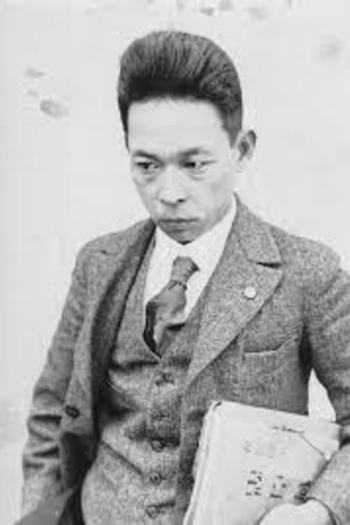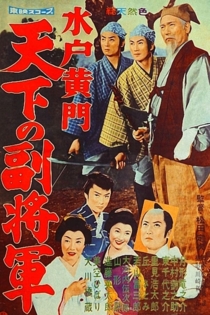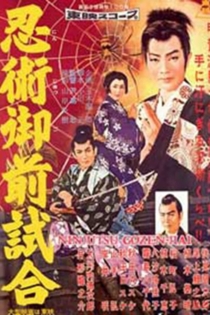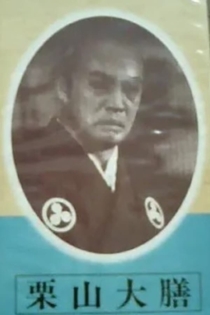
Tomiyasu Ikeda
1892 - 1968天竜母恋い笠
Eiichi Kudo
Hibari Misora, Tomisaburō Wakayama
From the opening theme song to the grand finale, you know that you have found something special as this exciting movie stars the great Misora Hibari in one of her most memorable performances as she plays Shintaro and Oharu, a brother and sister, the children of a lumber dealer who had been murdered by the evil boss Kumagoro who plots to take over Shintaro's family business with the help of a corrupt deputy who has fooled the family into believing that he is on their side.
Heavenly Dragon

続水戸黄門
Tomiyasu Ikeda
Kaichi Yamamoto, Gorō Kawabe
The earliest existing version (incomplete) of Mito Komon history. It was one of the most famous (and most filmed) Jidaigeki stories. Lord Mito is the sage who wanders the countryside rectifying government corruption along with his faithful attendants Suke-san and Kaku-san.
Zoku Mito Kōmon

水戸黄門 天下の副将軍
Sadatsugu Matsuda
Ryūnosuke Tsukigata, Kinnosuke Nakamura
After settling the matter of shogunal succession, the retired Old Lord of Mito finds himself in a sea of trouble when he gets involved in the succession of the Takamatsu clan. The usurpers try by every means to effect their takeover, even if it leads to blood being spilled. Along with Kaku and Suke, the elder must face the most dangerous time of his life, in a battle against those corrupt individuals who would use any means to further their dastardly conspiracy, regardless of how many lives might be destroyed. The great Misora Hibari gives a bravura performance, as does the rest of this all-star cast. This is another outstanding effort on the part of the Toei Films, blending fact and fiction to bright back Japan’s golden era of the Genroku period.
Lord Mito 2: The Nation's Vice Shogun

建国史 尊王攘夷
Tomiyasu Ikeda
Denjirō Ōkōchi, Tamitaro Onoe
For nearly 300 years, Japan had been hermetically sealed to the outside world. When, in that pivotal year of 1854, the American Admiral Perry took the direct approach that the Dutch had been unwilling to take, the ruling Shogun knew that the dynasty was over. As the shogun began to open up to the outside world, the Sonno Joi movement called for this to be reversed...
Sonno Joi

渋川伴五郎
Kōkichi Tsukiyama
Matsunosuke Onoe, Kohaku Arashi
A film on the life of Shibukawa Bangorō, the founder of the Shibukawa-ryū school of jūjutsu. To paraphrase Satō Tadao’s blurb on the back cover of the video, this is an important film for three reasons. 1. it is an almost perfectly well preserved copy of one of only a few full-length movies still available of the first superstar in Japanese cinema history, the very famous Onoe Matsunosuke. 2. it uses a method that was common in the silent era, the dyeing/tinting of film to mark given moments of day (for ex., blue for night-time) or given situations (for ex., red for fire) – and even though most films that used this technique have been redeveloped in straight b&w, this one is available in its original form. 3. it is an early SFX (special effects) movie that uses the basic tools of the trade - a great action movie full of swordsmanship and monsters (bakemono).
Shibukawa Bangorō

弥次喜多 尊王の巻
Tomiyasu Ikeda
Yukiko Asano, Enichiro Jitsukawa
Yaji and Kita: Yasuda's Rescue is a 1927 black and white Japanese silent film directed by Tomiyasu Ikeda.[1] This comedy film showcases the comic talent of Denjiro Okochi, which contrasts markedly with his heroic performance in Oatsurae Jirokichi Koshi. The humorous exchanges with Goro Kawabe, his senior at Nikkatsu, can be priceless, with the expressions and movements of the two goofy characters making for pure, hilarious slapstick comedy. A 15-minute remnant of the film was released on DVD by Digital Meme with benshi accompaniment by Midori Sawato and Ryubi Kato.
Yaji and Kita: Yasuda's Rescue

忍術御前試合
Tadashi Sawashima
Sentarô Fushimi, Koinosuke Onoe
During the Age Of Wars (Sengoku Era), Tokugawa Ieyasu and Toyotomi Hideyoshi are vying for power and each uses their secret weapons in order to try and defeat the other. Momochi Sandayu of the Iga, along with his disciple Ishikawa Goemon are ordered by Ieyasu to assassinate Hideyoshi and get the blueprints for the hidden fortress within Osaka Castle. Meanwhile the Koga group organizes to try and defend the castle for the peace of the nation. Beating off every trick from Sandayu, Torawakamaru protects the drawing, and when Ieyasu figures out a way to hold a match between Koga and Iga the two masters fight the greatest ninja battle ever held. The effects are truly spectacular in this classic ninja film from Toei.
Torawakamaru, the Koga Ninja

弥次喜多 鳥羽伏見の巻
Tomiyasu Ikeda
Gorō Kawabe, Denjirō Ōkōchi
Yaji and Kita: The Battle of Toba Fushimi is a 1928 Japanese film directed by Tomiyasu Ikeda.[1] This comedy film showcases the acting talent of Denjirō Ōkōchi and acts as a complementary film to Yaji and Kita: Yasuda's Rescue, which is part of the Yaji and Kita series. An 8-minute remnant of the film was released on DVD by Digital Meme with a benshi accompaniment by Midori Sawato. The version in the National Film Center is 23 minutes long.
Yaji and Kita: The Battle of Toba Fushimi




